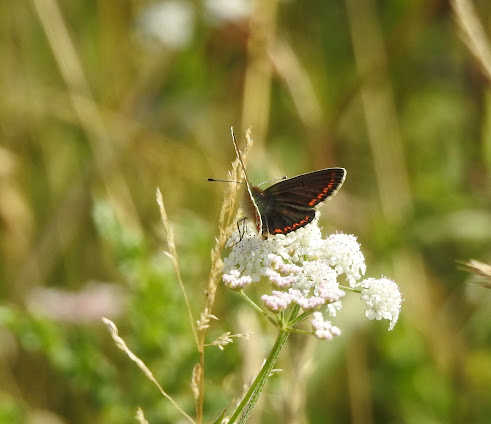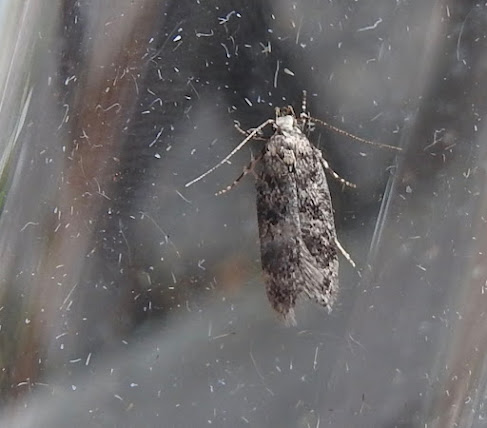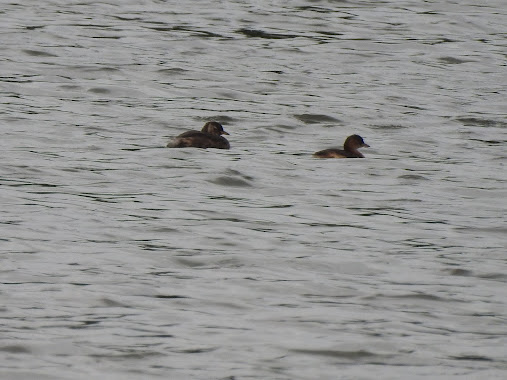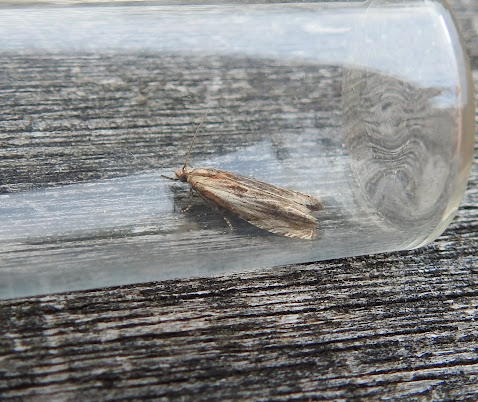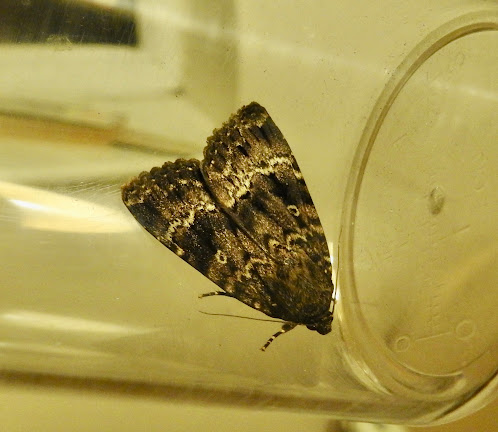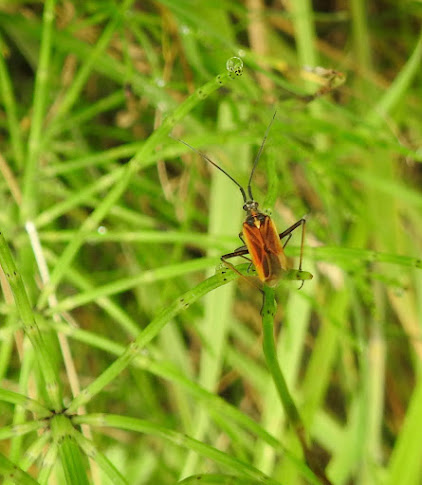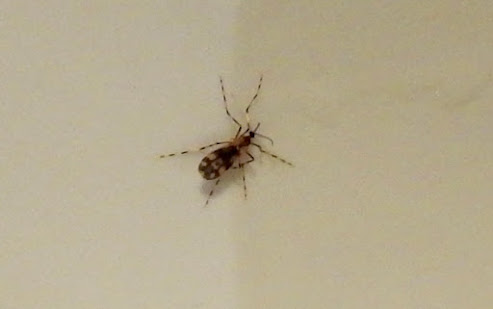A cloudy and rather muggy morning. A couple of showers later. This visit to Morton Bagot started encouragingly, but rather petered out.
Shortly after watching a party of newly fledged Whitethroats at Netherstead, I was in the right place to see a Hobby dash past before gaining height and circling until a mobbing Kestrel moved it on. Sadly it was too quick, and then too distant to allow for a photo. But the Whitethroats had been more obliging.
 |
| Whitethroat |
A single Lesser Whitethroat, and a juvenile Willow Warbler joined a big flock of 30 plus Blue and Great Tits but no other migrants were apparent.
The flash field was absolutely hopeless, but fortunately Morton Bagot has plenty more to offer. Casting my eyes over the bank of thistles and nettles bordering the Morton Brook, it didn't take long before I saw something different. A fly called Eriothrix rufomaculata drew attention thanks to its crimson and black abdomen. Obviously I hadn't a clue what it was at the time, but eventually followed an Internet trail to the right answer. I resisted the urge to ask the app.
 |
| Eriothrix rufomaculata |
Plenty of other insects vied for my attention.
 |
| Ruddy Darter |
 |
| Udea lutealis |
The broad border to the mown field was fantastic for flowers, but I could name few of them. In fact eventually I had a "what is this stuff?" moment and remembered the obsidentify app. It turned out to be Upright Hedge Parsley. I'd never heard of it.
 |
| The white bits are Upright Hedge Parsley |
It's a hell of a lot easier than trawling through pages and pages of flowers in one of my plant field guides. I could get into plants at this rate.
Breaking news: Mike Lane flushed a Great White Egret at Middle Spernall Pools at 09.00am this morning. It flew off in the direction of Studley.
